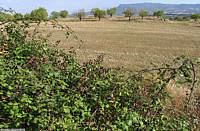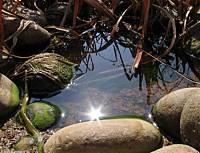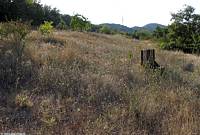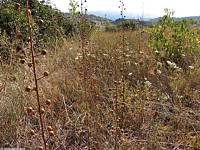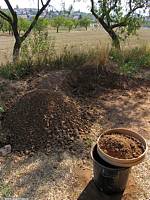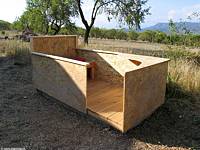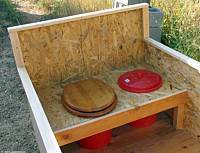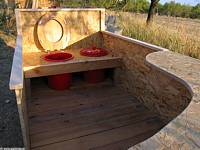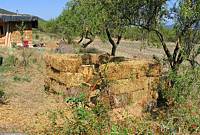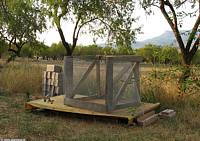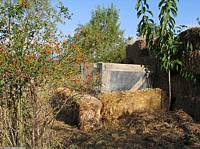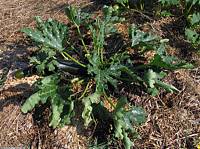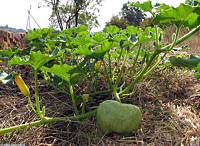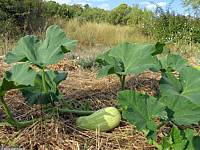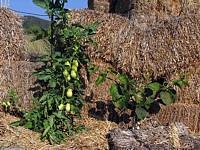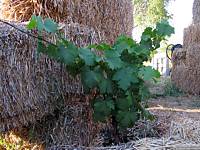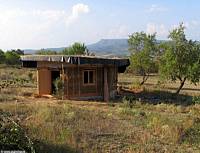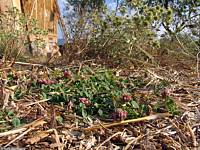|
|
Nature
Switched On
in the Pyrenees the first 10 years |
|
|
|
introduction |
2009 August 18 to 27 August has been even warmer than
July. On several days temperatures The Natterjack toads (Epidalea calamita) are also ready to respond: after each substantial rainfall they organize their meetings and matings and days later strings of eggs and then the tadpoles can be found.
|
Swollen blackberries on the lowest terrace. |
|
|
Natterjack tadpoles in the drying superior pond. 22 August 11:03 |
|
||
|
Fruit of Verbascum blattaria on the lowest
terrace. |
Overview central terrace,
looking north-west. 22 August 19:08 |
||
1. Sieve the earth with 6mm sieve to get rid of the stones. |
|
I continued the plaster work. As I am getting quite
enthusiastic about this material and am sure that many people will
also be interested in the applications (quite ancient by the way) of this 'gold' that can be
extracted for nothing from the earth, I decided to add a more extensive
paragraph about the matter with a sequence of the different stages
with the corresponding images here on the left.
In some areas, especially the corners, I could have introduced just some more loose straw to save earth plaster, but I preferred to fill them in with the plaster, even to depth of up to 10 cms. All this plaster (adding up to at least 1 m3) will act as an effective temperature buffer, tempering the extremes in summer and winter. In fact, I could already notice the effect, even with the open windows and door: when the temperature reached 35ºC outside, inside it didn't pass 28ºC.
In the coming weeks I will add another fill-up
layer and then apply a finish layer of clay and sand (and
possibly some colouring agent) for which I will need to do some
experimenting. |
|
| 2. Heap of 3 layers: one layer of 50 litre sieved earth, one layer of 50lt straw and another 50lt layer of earth. |
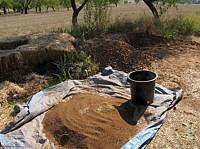 |
||
|
3. Mix the three layers with a shovel.
|
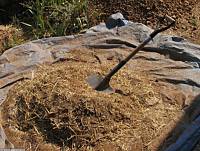 |
||
| 4. Add
about 25lt water in a volcano cone.
|
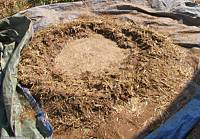 |
||
| 5. Tramp and mix with feet. |
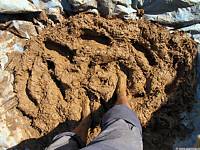 |
||
| 6.
Turn the mix several times over with the PE sheet.
|
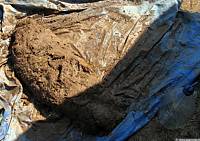 |
||
| 7. Leave the mix overnight to ensure that all the clay
particles dissolve. Don't cover the mix completely with the sheet to air the mix and avoid a bad smell. |
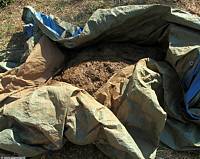 |
||
| 8. Apply
the plaster mix with bare hands. Make sure to damp the wall with a spray before adding another layer. Let dry between aplications. |
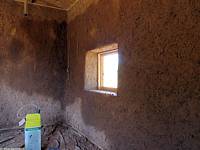 |
||
|
Cement blocks as the foundation and the
discarded door as the
floor for the waterless compost toilet. |
|
||
|
Two red containers (20lt) one
for the closet, another one for the chopped straw. 26 August 18:29 |
|||
| Entrance
with toilet table on the right. 27 August 8:17 |
The beginning of the strawbale
structure to 'wrap' the toilet and support the roof. 27 August 11:41 |
||
|
Compost bin made of salvaged boards and wire mesh. The front mesh can be taken away to have access to the compost. 25 August 19:45 |
|
||
|
Compost bin in the shade of the
garden wall and the cherry tree, which will also benefit from the
compost. 26 August 18:30 |
|||
|
Zucchini ('Emeraude' F-1), with
an impressive fruit of more than 50cms. |
We
couldn't give all the attention needed to the vegetable garden and
we didn't do any watering this month. So the 20 litres of rain that
fell were really a relieve and the straw layer assured that the
beneficial effect lasted for weeks.
|
||
|
Squash (Cucurbita maxima) 'Triamble'. 24 Aug 9:35 |
Squash
(Cucurbita moschata) 'Butternut'. 24 Aug 9:36 |
||
|
Tomatoes ('Roma VF') and Kiwi. 22 Aug10:28 |
Grape vine ('Merlot'). 22 Aug 19:20 |
||
|
Because of all the different activities, spontaneous paths are
forming around the garden house. I try to favour and maintain these
paths and animate visi
|
|||
|
Paths 'starring' from the garden house. 22 Aug19:05 |
Trifolium fragiferum in a bed of straw, adapting to the trampling. 24 Aug 9.32 |
||
|
introduction
|
|
||
